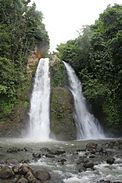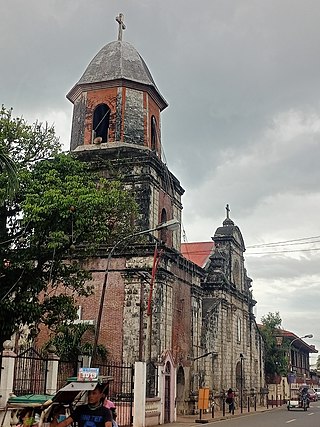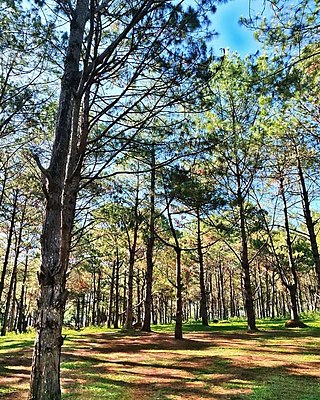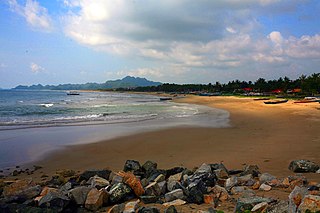Bago | |
|---|---|
| City of Bago | |
From top, left to right: Public Plaza, Balay ni Tan Juan, Buenos Aires Mountain Resort, Tan Juan Monument, Kipot Twin Falls. | |
Nicknames:
| |
| Motto(s): "Go, Bago" | |
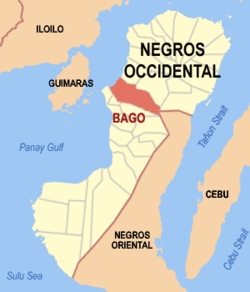 Map of Negros Occidental with Bago highlighted | |
Location within the Philippines | |
| Coordinates: 10°32′20″N122°50′18″E / 10.538797°N 122.838447°E | |
| Country | Philippines |
| Region | Western Visayas |
| Province | Negros Occidental |
| District | 4th district |
| Launched | June 24, 1575 |
| Cityhood | February 19, 1966 |
| Boroughs | 24 (see Barangays) |
| Government | |
| • Type | Sangguniang Panlungsod |
| • Mayor | Nicholas M. Yulo |
| • Vice Mayor | Ramon D. Torres |
| • Representative | Juliet Marie D. Ferrer |
| • City Council | Members |
| • Electorate | 99,799 voters (2022) |
| Area | |
| • Total | 401.20 km2 (154.90 sq mi) |
| Elevation | 187 m (614 ft) |
| Highest elevation | 2,436 m (7,992 ft) |
| Lowest elevation | 0 m (0 ft) |
| Population (2020 census) [3] | |
| • Total | 191,210 |
| • Density | 480/km2 (1,200/sq mi) |
| • Households | 47,427 |
| Demonym | Bagonhon |
| Economy | |
| • Income class | 2nd city income class |
| • Poverty incidence | 20.60 |
| • Revenue | ₱ 1,151 million (2020) |
| • Assets | ₱ 2,686 million (2020) |
| • Expenditure | ₱ 1,135 million (2020) |
| • Liabilities | ₱ 665.6 million (2020) |
| Service provider | |
| • Electricity | Central Negros Electric Cooperative (CENECO) |
| Time zone | UTC+8 (PST) |
| ZIP code | 6101 |
| PSGC | |
| IDD : area code | +63 (0)34 |
| Native languages | Hiligaynon Tagalog |
| Website | www |
Bago, officially the City of Bago (Hiligaynon : Dakbanwa/Syudad sang Bago; Filipino : Lungsod ng Bago), is a 2nd class component city in the province of Negros Occidental, Philippines. According to the 2020 census, it has a population of 191,210 people. [3]
Contents
- Etymology
- History
- Precolonial Times
- Spanish Era
- 17th century
- 19th century
- 20th century
- 21st century
- Geography
- Barangays
- Climate
- Demographics
- Economy
- Government
- List of former chief executives
- Notable personalities
- References
- Sources
- External links
Located 22 kilometres (14 mi) south of the provincial capital Bacolod, Bago comprises 6.63% of the population of the entire Negros Occidental, making it the third most populous city in the province. It sets a land area of 389 square kilometres, which is 5% of the entire Negros Occidental and 10% of the total land area of component cities.
It is also tagged as the “Home of Historical and Natural Treasures”, owing to its contribution to the history of the province of Negros Occidental and country, and its scenery and flora and fauna making it an eco-tourism destination.[ citation needed ] It is also known as the “Boxing Capital of the Philippines” title, owing to the great names it produced in boxing.[ citation needed ] It is also home to the only three known populations of the endangered Irrawaddy dolphin in the entire Philippines. The other two populations are in Guimaras and Palawan. All of which are designated as critically endangered populations. [5]




